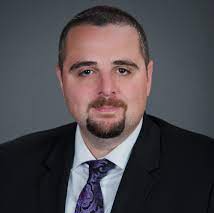By Ahmad Masri, MD, MS
The Veterans Health Administration exists to integrate health care services for those who served in the U.S. Armed Forces. Yet for many veterans, getting access to treatment for transthyretin amyloidosis, a rare disease caused by a buildup of abnormal proteins, is difficult.
I see this with my own patients. Three challenges in particular stand out.
1. Limited drug formularies. Hereditary transthyretin (hATTR) amyloidosis is a complex disease that can affect a patient’s nervous system, heart, or both. There are three different approved medications for the two main presentations of the disease – one is for cardiac symptoms and two are for neurologic symptoms.
Despite the drugs’ having different FDA labels, the VA often treats the medications interchangeably. That includes covering only one of the three medications upfront, tafamidis the oral drug for cardiac transthyretin amyloidosis. Only after patients show progression on tafamidis, then physicians are allowed to request patisiran.
This means veterans who have the neurologic condition don’t get immediate access to the medication studied in clinical trials and approved by the FDA for their type of amyloidosis. They must try and fail on a medication that wasn’t approved by the FDA to treat their condition before appealing for access to one that was.
The lack of comprehensive coverage limits physicians and robs patients of their ability to get the right medication in a timely manner.
2. Suboptimal dosing. Even for veterans with cardiac transthyretin amyloidosis who can get the right medication, it’s not always smooth sailing. Coverage policies in some VA regions limit patients to a lower dose of medication than the FDA’s label specifies.
A lower dose may mean patients are not getting the full benefit of the drug. Granted, some experts question the data supporting a higher dose. In a progressive disease like amyloidosis, however, clinicians should err on the side of patients’ benefit, especially when the higher dose has the same safety profile as the lower dose.
Rationing expensive medications for financial reasons sets a dangerous precedent that removes decision-making authority from the physician and patient and instead forces a one-size-fits-all approach.
3. Inconsistent geographic access. The VA’s coverage determinations vary depending on region, so patients in different geographic areas have inconsistent access to medication. This can lead to further disparities in care, where patients who are able to travel to another VA facility can potentially get better treatment than those who cannot.
With a debilitating rare disease like hATTR amyloidosis, patients may not be capable of traveling to out-of-state appointments. And the trend of receiving patients from elsewhere can create an unnecessary burden on the health care providers in locations with favorable coverage policies.
For some patients, enrolling in a clinical trial becomes their best pathway to the right treatment for them. Yet clinical trials typically have strict criteria and rigid schedules, so they are not always a viable option.
As a health system, the VA covers a large proportion of transthyretin amyloidosis patients because the condition usually presents in older adults, particularly older men. It is not a secret that medications used in the treatment of transthyretin amyloidosis are very expensive, and the VA does an excellent job in requiring patients to be responsible for only a small monthly co-pay.
The VA has the opportunity to lead the way in providing patient-centered care for the historically untreatable disease. It should, however, work for best patients’ care rather than restricting physicians and limiting patients’ access.
Veterans with transthyretin amyloidosis are fighters, having first served their country and then forced to battle a progressive and rare disease. They shouldn’t have to also fight for access to the health care they rightfully earned.

Ahmad Masri, MD, MS, is a cardiologist in Portland, Oregon, and a member of the Alliance for Patient Access’ Rare Diseases Working Group. He reports research grants from Pfizer, Akcea, and Ultromics, and consulting fees from Eidos, Ionis, Akcea, Alnylam, Pfizer & Cytokinetics.





